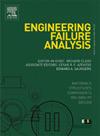金属材料的分裂:一个批判性的评论
IF 4.4
2区 工程技术
Q1 ENGINEERING, MECHANICAL
引用次数: 0
摘要
劈裂是金属合金在机械实验室测试或在实际结构的操作条件下发生的分层。这篇综述提供了一个全面的概述,分析,并讨论了对金属合金分裂现象的理解的关键贡献,解决了公认的概念,背景化的最新发展,并突出了围绕这一现象的未解决的问题。本文首先介绍了“分层”一词在材料科学与工程中的应用。随后,对分层类型的分类进行了探讨。虽然这篇批判性评论的主要焦点是分裂,但也简要讨论了其他类型分层的某些方面。鉴于这种现象的重大影响,重点放在管道材料中劈裂的发生。详细研究了在关键工业中具有当前和潜在应用的金属材料中导致分层事件的因素。此外,通过各种力学试验,包括拉伸试验、Charpy-V缺口试验、落锤撕裂试验和断裂韧性试验,对金属力学行为中分层事件的解释进行了彻底分析,并特别关注了它们对结构完整性的影响。通过分析最近发表的断层扫描结果,回顾了断裂力学试样中裂缝的形态和几何特征。解释了劈裂增韧和更广泛的分层增韧现象,并介绍了利用劈裂增韧设计和生产具有优越强度和韧性的金属合金的最新趋势。最后,讨论了分裂事件在氢脆中的作用,强调了在这种情况下分裂的矛盾解释。本文章由计算机程序翻译,如有差异,请以英文原文为准。
Splits in metallic materials: A critical review
Splits are delaminations that can occur in metallic alloys during mechanical laboratory testing or under operational conditions in real-world structures. This review provides a comprehensive overview, analysis, and discussion of key contributions to the understanding of split phenomena in metallic alloys, addressing well-established concepts, contextualizing recent developments, and highlighting unresolved questions surrounding this phenomenon.
The review begins by introducing the use of the term “delamination” in materials science and engineering. Subsequently, the classification of delamination types is explored. While the primary focus of this critical review is on splits, certain aspects of other types of delaminations are also briefly discussed. Emphasis is placed on the occurrence of splits in pipeline materials, given the significant impact of this phenomenon. The factors contributing to delamination events in metallic materials with current and potential applications in critical industries are examined in detail. Furthermore, the interpretation of delamination events in the mechanical behavior of metals is thoroughly analyzed through various mechanical tests, including tensile tests, Charpy-V notch tests, drop-weight tear tests, and fracture toughness tests, with a special focus on their implications for structural integrity.
Morphological and geometric characteristics of splits in fracture mechanics specimens are reviewed by analyzing recently published tomography results. The phenomenon of split toughening, and delamination toughening more broadly, is explained, and recent trends in leveraging split toughening to design and produce metallic alloys with superior strength and toughness are contextualized. Finally, the role of split events in hydrogen embrittlement is discussed, highlighting contradictory interpretations of splits in this context.
求助全文
通过发布文献求助,成功后即可免费获取论文全文。
去求助
来源期刊

Engineering Failure Analysis
工程技术-材料科学:表征与测试
CiteScore
7.70
自引率
20.00%
发文量
956
审稿时长
47 days
期刊介绍:
Engineering Failure Analysis publishes research papers describing the analysis of engineering failures and related studies.
Papers relating to the structure, properties and behaviour of engineering materials are encouraged, particularly those which also involve the detailed application of materials parameters to problems in engineering structures, components and design. In addition to the area of materials engineering, the interacting fields of mechanical, manufacturing, aeronautical, civil, chemical, corrosion and design engineering are considered relevant. Activity should be directed at analysing engineering failures and carrying out research to help reduce the incidences of failures and to extend the operating horizons of engineering materials.
Emphasis is placed on the mechanical properties of materials and their behaviour when influenced by structure, process and environment. Metallic, polymeric, ceramic and natural materials are all included and the application of these materials to real engineering situations should be emphasised. The use of a case-study based approach is also encouraged.
Engineering Failure Analysis provides essential reference material and critical feedback into the design process thereby contributing to the prevention of engineering failures in the future. All submissions will be subject to peer review from leading experts in the field.
 求助内容:
求助内容: 应助结果提醒方式:
应助结果提醒方式:


